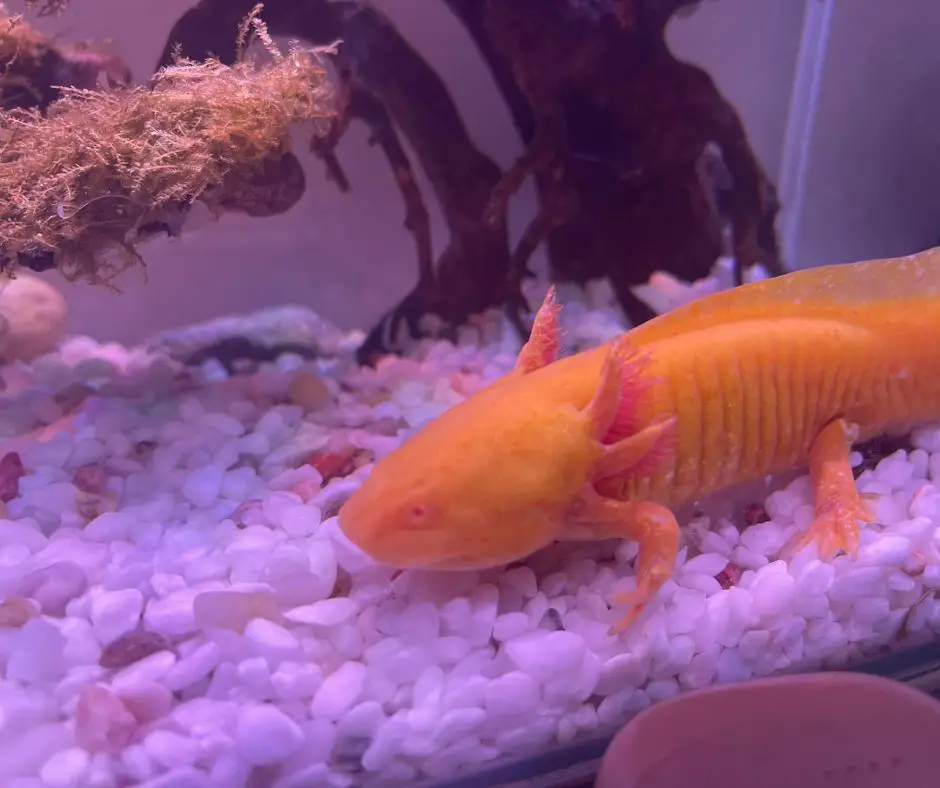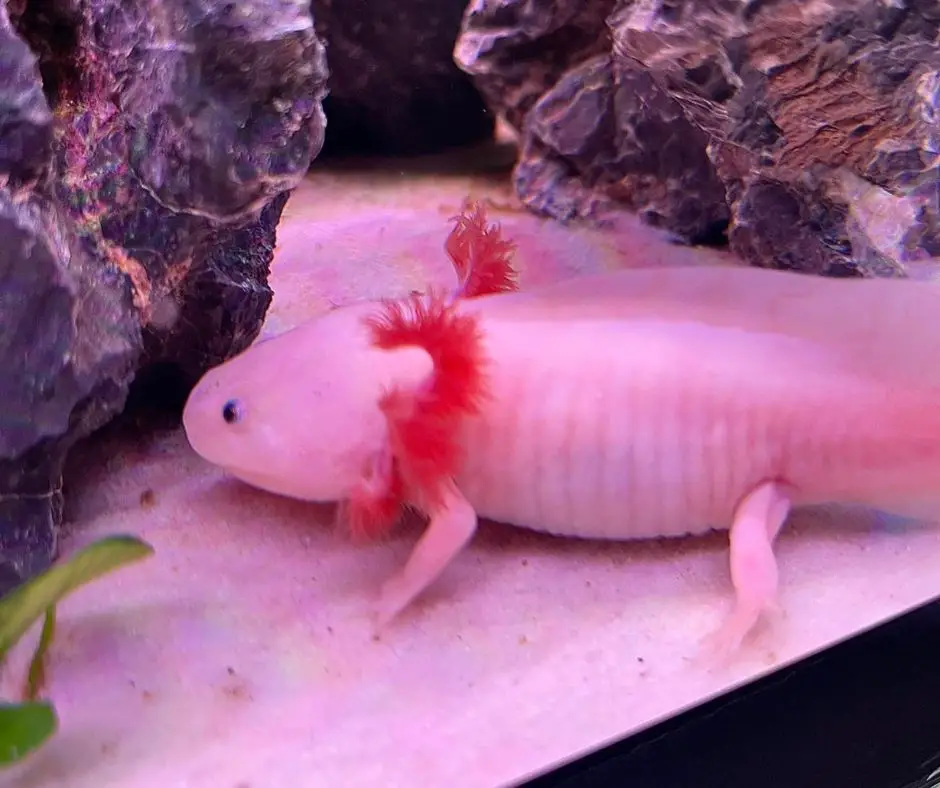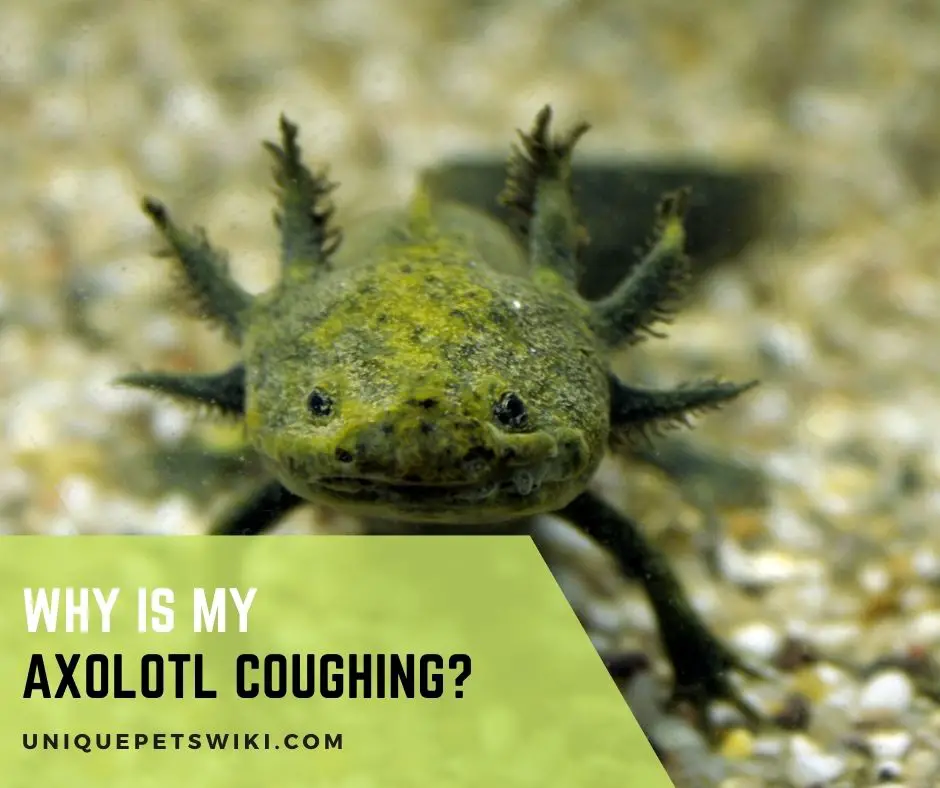Axolotls are fascinating pets with small mouths and jaws. Large food particles can choke the mouth and cause harm to the oral cavity.
Axolotls’ respiratory systems are likewise affected by rapid changes in water parameters. So, Why Is My Axolotl Coughing?
Axolotl owners should understand the anatomy and histology of their pets’ respiratory systems.
A coughing axolotl does not necessarily have a respiratory infection. To treat the underlying ailment before it worsens, it is vital to understand the source of coughing.
The reader will learn about the various reasons for coughing in this article.
The article will also teach people about the other problems related to coughing such as Axolotl throw up, noises, and gulping air. To keep your axolotl safe and healthy, read the entire article.
Contents
Why Is My Axolotl Coughing?
Axolotls suck the water by opening their mouth. Food or something else may enter the mouth when sucking the water.
When the temperature in the tank rises, Axolotl coughs or sneezes to expel the food particles. As a result, while this behavior is unusual, it is not lethal to axolotls.
When an axolotl eats something that is too large for its mouth, it becomes caught in the esophagus.
As a result, they cough to get rid of the stuck material. Coughing is also caused by abrupt changes in the water conditions in axolotls.

Sudden Change in Parameters
Axolotls try to adjust their behavior to the tank’s environment. After changing the tank water, you must modify the parameters before adding axolotls to the tank.
Coughing can be caused by abrupt changes in factors such as PH, nitrites, and ammonia.
The parameters must be checked, and the nitrites level must be kept at zero. Because nitrites promote coughing, which can make axolotls stressed.
Adjust the parameters as needed, and if the axolotl does not feel better, visit a veterinarian to assess the axolotl’s health.
Stoney River White Aquatic Sand
- Will not affect PH
- Safe for use in freshwater aquariums
- Non-Toxic coating
Last update on 2022-12-29 / Affiliate links / Images from Amazon Product Advertising API
Trying To Dislodge Something Stuck
In the tank, sand, gravel, algae, and small grains can get stuck in the axolotl’s mouth. To evacuate these materials, axolotls cough.
To expel the particle, Axolotl applies pressure to the muscles of the oral cavity. Axolotls also regurgitate to spit out some unwanted food material.
You must pay close attention to axolotl activity. You should not be concerned if the axolotl coughs and returns to normal after consuming anything.
If it continues to cough, contact a veterinarian right away. Coughing, on the other hand, does not become intense and is not a serious problem.
Axolotl Coughing and Related Problems

- Axolotl throw up
Regurgitation is how axolotls get rid of undesirable food. It is not a disease or a symptom of one.
When an axolotl eats too much, it throws up to get rid of it. Too much food in the stomach causes digestion problems.
Axolotls are likewise compelled to vomit when the tank’s ammonia content is too high.
Check out: Why Is My Axolotl Throwing Up?
- Axolotl noises
Because they lack vocal cords, axolotls do not produce noise. They breathe through their gills, lungs, buccal membrane, and skin.
As a result, gulping air and inhaling via the buccal membrane produce noises.
Check out: 2 Common Axolotl Noises and Their Meanings
- Axolotl dig
Axolotl digging is normal behavior. To find the food, they dig in the sand. Axolotls detect prey and food through their sense of smell.
So, digging for food or prey is their natural hunting approach. They might come across worms, food particles, or something tasty.
Check out: Why Is My Axolotl Digging?
- Axolotl gulping air
When the oxygen level in the tank is low, axolotls will gulp air. Furthermore, as axolotls’ gills shrink, they are unable to take enough oxygen through their gills.
As a result, they gulp air from the water’s surface to meet their oxygen needs.
Check out: Why Does My Axolotl Keep Going up for Air?
Uniclife Aquarium Air Pump Dual Outlets Adjustable Quiet Oxygen Aerator Pump
- Steady Output: Max Air Flow Rate: 64 GPH; Pressure: 0.016 MPa; Power: 4 W. Perfect for aeration in 10 - 60 gallon fresh water and marine aquariums.
- Adjustable Air Flow: Feature a rotary knob to control the amount of air for dual outputs, allowing for your desired air flow to fully oxygenate your fish tank.
- Quiet Operation: The pump emits 25 dB sound under the “Low” mode and maximum 45 dB noise like the hum of a refrigerator under the highest air flow.
- 2 Air Stone Discs: Produce lots of dense medium bubbles bursting into the surface of water steadily. A great way to aerate your tanks and enliven the aquatic life.
- Pump Accessories: Include 2 air stones, 6.5-foot airline tubing, 2 check valves and 2 connectors. Complete accessories to build the basic aeration setup in your tank.
Last update on 2022-12-29 / Affiliate links / Images from Amazon Product Advertising API
FAQs
Do axolotls sneeze?
Yes, Axolotls sneeze shortly after changing their water. An abrupt change in temperature, pressure and pH can cause this. Sneezing is sometimes caused by high nitrate levels in the tank. However, sneezing is not a serious issue.
Why do axolotls flap their gills?
Axolotls flip their gills to get dissolved oxygen from water. When they flip the gill filaments, more water flows towards the gills, where the capillary network takes the oxygen. However, frequent gill flipping could indicate an underlying issue.
Check out: Why Are Axolotl Flapping Gills?
Can an axolotl yawn?
Axolotls do, in fact, yawn at the bottom of the tank. Axolotls become sleepy after being active for a long time. So, they yawn and rest at the bottom.
Check out: Do Axolotls Sleep?
Is it normal for the axolotl to gulp air?
Yes, gulping air is normal for axolotls. Because they breathe through their lungs as well. They take in air and extract oxygen. Gulping at the surface, on the other hand, can indicate poor water quality.
Conclusion:
Axolotls coughing is not a serious issue, and it is not fatal for them. They cough to eliminate food or other foreign objects stuck in their mouth.
Sand, gravel, or algae might get stuck in the mouth when opening the mouth to suck the water.
As a result, coughing, sneezing, and gulping air are common. Coughing, sneezing, and gulping frequently can indicate a problem with the water parameters or an underlying problem.
If the axolotl does not improve, alter the water parameters, and visit a veterinarian.


